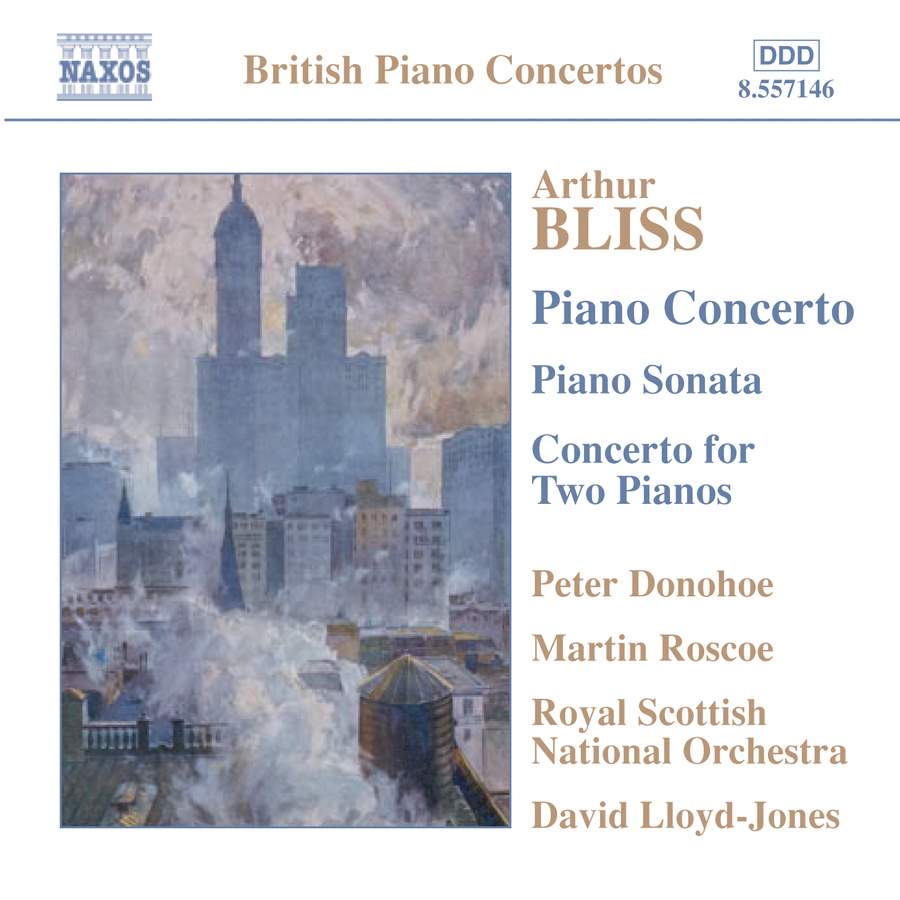
kompozytor
Bliss, Arthur
tytuł
BLISS: Piano Concerto
wykonawcy
Royal Scottish National Orchestra;
Lloyd-Jones, David;
Donohoe, Peter;
Roscoe, Martin
Lloyd-Jones, David;
Donohoe, Peter;
Roscoe, Martin
nr katalogowy
8.557146
opis
The British Council commissioned Bliss to compose his Piano Concerto to mark British Week at the 1939 New York World’s Fair. The première took place on 10th June that year, with Solomon as the soloist, and the New York Philharmonic Orchestra under Adrian Boult. •
Here is a big-boned work, energetic, ebullient, and forthright, but within this expansive framework there is also room for quieter, more personal emotions portrayed in a rich vein of lyricism. The adjective ‘romantic’ is equally appropriate for a work following in the tradition of concertos by Liszt, Tchaikovksy and Busoni. Indeed the ferocious double octaves at the opening of the work indicate Bliss’s intentions and a virtuoso of a high order is required to fulfil them. •
The Concerto for Two Pianos has its origins in one of the experimental works exploiting the voice that Bliss wrote in the years immediately after the first World War, the Concerto for piano, tenor and strings of 1921, which is now lost. Realising that this unusual combination would be a hindrance to further performances, yet being fond of the work, Bliss decided to recast it as a concerto for two pianos accompanied by an orchestra of wind, brass and percussion. In this form it received its première in Boston in 1924. Bliss was still not satisfied, however, and reorchestrated it for full orchestra, and as such it was first heard at the Proms in 1929. A final revision in 1950 resulted in the work heard here, although there was to be yet one more metamorphosis, for Bliss sanctioned a version for three hands in 1968 for the pianists Phyllis Sellick and Cyril Smith.
nośnik
CD
gatunek
Muzyka klasyczna
producent
Naxos
data wydania
12-01-2004
EAN / kod kreskowy
747313214624
Produkt nagrodzony:
Fanfare: 'Want List' (2012)

(Produkt nie został jeszcze oceniony)
cena 58,00 zł
lubProdukt na zamówienie
Wysyłka ustalana indywidualnie.
Darmowa wysyłka dla zamówień powyżej 300 zł!
Darmowy kurier dla zamówień powyżej 500 zł!
sprawdź koszty wysyłki













































